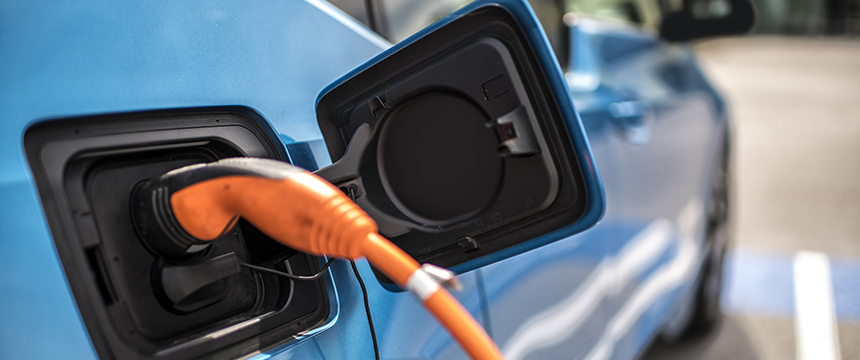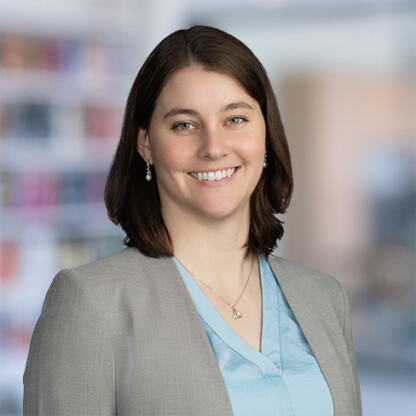Le ministère américain des Transports publie les lignes directrices du programme NEVI Formula, offrant aux acteurs publics et privés une feuille de route pour le financement des infrastructures destinées aux véhicules électriques.

Comme nous l'avons souligné dans nos articles du 29 décembre 2021et du 19 janvier 2021,la loi bipartisane sur les infrastructures (BIL) a été adoptée le 15 novembre 2021 et promulguée sous le nom de loi sur les investissements dans les infrastructures et l'emploi (IIJA) (Pub. L. 117-58), qui comprenait l'autorisation du programme NEVI (National Electric Vehicle Infrastructure) Formula Program. Après avoir recueilli les commentaires du public, le ministère américain des Transports (DOT) a publié ses directives pour le programme NEVI Formula le 10 février 2022, marquant ainsi une nouvelle étape importante pour le gouvernement fédéral dans le développement d'un réseau national de recharge pour véhicules électriques et donnant aux acteurs publics et privés une idée du cadre émergent pour accéder à ces fonds destinés à l'infrastructure.
Dans le cadre du programme NEVI Formula de l'IIJA, un total de 7,5 milliards de dollars a été alloué au développement et à la construction d'un réseau national de 500 000 stations de recharge pour véhicules électriques d'ici 2030. Les 5 premiers milliards de dollars sur les 7,5 milliards ont été consacrés au financement de programmes étatiques au cours des cinq prochaines années, et chaque État devra soumettre au plus tard le 1er août 2022 au Bureau conjoint de l'énergie et des transports (le « Bureau conjoint ») un plan de déploiement des infrastructures pour véhicules électriques (plan VE) décrivant l'utilisation prévue de ces fonds par l'État. Par la suite, l'Administration fédérale des autoroutes approuvera les plans éligibles de manière continue jusqu'au 30 septembre 2022. En outre, 10 % des 5 milliards de dollars seront réservés à l'octroi de subventions discrétionnaires afin de combler les lacunes du réseau national. Les 2,5 milliards de dollars restants seront alloués à un programme de subventions discrétionnaires visant à mettre en place des infrastructures de recharge pour véhicules électriques dans les communautés rurales et mal desservies. Les directives relatives à ce financement discrétionnaire seront publiées séparément par le ministère américain des Transports dans le courant de l'année.
Les plans EV doivent être conformes à la section 508 de la loi sur la réadaptation (Rehabilitation Act) et un modèle recommandé sera disponible auprès du bureau conjoint. Lors de la préparation d'un plan EV, comme décrit dans le guide du programme NEVI Formula, les États doivent généralement respecter le cadre suivant :
- Introduction: cette section doit présenter le plan EV et résumer les thèmes abordés dans ce plan.
- Coordination entre les agences gouvernementales: cette section doit décrire comment le département des transports et de l'énergie ou le département de l'environnement de l'État ont coordonné l'élaboration du plan pour les véhicules électriques.
- Participation du public : cette section doit décrire comment l'État a associé divers groupes de parties prenantes à l'élaboration du plan pour les véhicules électriques, notamment le grand public, les entités gouvernementales, les tribus reconnues au niveau fédéral, les organisations syndicales, les représentants du secteur privé/de l'industrie, les représentants des secteurs du transport et de la logistique du fret, les agences de transport public de l'État et les communautés urbaines, rurales, mal desservies ou défavorisées.
- Vision et objectifs du plan : cette section doit présenter la manière dont l'État utilisera les fonds, répartis sur un plan quinquennal, afin de soutenir l'objectif du programme NEVI qui consiste à fournir un réseau de véhicules électriques pratique, abordable, fiable et équitable à l'échelle de l'État et du pays.
- Contrats : Dans cette section, l'État doit décrire tout projet de contrat avec des entités tierces pour la construction, l'exploitation et la maintenance des stations de recharge pour véhicules électriques.
- Analyse des conditions actuelles et futures: cette section doit décrire toutes les considérations spécifiques à l'État qui pourraient avoir une incidence sur le développement des infrastructures de recharge pour véhicules électriques, notamment les conditions géographiques et environnementales, les conditions industrielles et commerciales, les besoins en matière de transports publics et la capacité du réseau électrique.
- Déploiement de l'infrastructure de recharge des véhicules électriques : cette section doit présenter la stratégie de l'État en matière d'installation d'infrastructures afin de répondre aux visions et aux objectifs du plan pour les véhicules électriques. Elle doit également identifier les services publics où les stations de recharge sont prévues et inclure une carte de l'infrastructure de recharge ainsi que les taux d'utilisation et les pics de demande.
- Mise en œuvre : dans cette section, les États doivent décrire les programmes prévus en matière d'exploitation, de maintenance, de collecte et de partage des données.
- Droits civils: cette section doit décrire le plan mis en place par l'État pour se conformer aux lois fédérales et étatiques relatives aux droits civils, notamment le titre VI de la loi sur les droits civils et les réglementations connexes du ministère américain des Transports, la loi américaine sur les personnes handicapées et la section 504 de la loi sur la réadaptation.
- Considérations relatives à l'équité: cette section doit décrire comment le plan de l'État répondra à la mission du gouvernement fédéral qui consiste à fournir un accès équitable aux technologies des véhicules électriques. Le plan doit décrire la stratégie de l'État visant à impliquer les communautés rurales, mal desservies et défavorisées dans le développement des infrastructures pour véhicules électriques et doit se concentrer sur la création d'emplois pour ces communautés, ainsi que sur la garantie de l'accès aux stations de recharge pour véhicules électriques.
- Considérations relatives à la main-d'œuvre : cette section doit expliquer comment l'État va favoriser la diversité au sein de la main-d'œuvre chargée de l'installation et de l'entretien des stations de recharge pour véhicules électriques.
- Cybersécurité : cette section doit présenter le plan de cybersécurité mis en place par l'État pour protéger les stations de recharge pour véhicules électriques et leurs utilisateurs contre les codes malveillants.
- Évaluation du programme: cette section doit présenter le plan de l'État pour évaluer les performances de l'infrastructure et, de manière générale, la réalisation de ses objectifs et de sa vision à cinq ans.
- Exceptions discrétionnaires: dans certaines circonstances limitées, les États peuvent présenter une demande d'exception à l'obligation d'installer des bornes de recharge tous les 50 miles le long de la portion de l'autoroute inter-États située dans leur territoire, à moins d'un mile de l'autoroute inter-États. Les demandes doivent être accompagnées de preuves démontrant que l'octroi de l'exception contribuera à la mission du gouvernement fédéral qui consiste à fournir un réseau national de recharge pour véhicules électriques pratique, abordable, fiable et équitable.
Les fonds que les États reçoivent au titre du plan EV doivent d'abord être affectés aux corridors nationaux désignés pour la recharge des véhicules électriques et le ravitaillement en hydrogène, en propane et en gaz naturel, comme décrit plus en détail dans 23 U.S.C. §151(a)-(e). Une fois que l'État a construit ses corridors, comme certifié par l'Administration fédérale des autoroutes, les États peuvent utiliser les fonds restants alloués pour développer des infrastructures EV sur toute voie publique ou dans d'autres lieux accessibles au public. Les corridors sont considérés comme entièrement construits si : (i) une infrastructure de recharge pour véhicules électriques est installée tous les 50 miles le long des corridors désignés ; (ii) les stations de recharge sont capables de recharger simultanément quatre véhicules électriques ; (iii) les stations de recharge ont une capacité totale égale ou supérieure à 600 kW ou d'au moins 150 kW par port ; et (iv) le corridor répond à toutes les considérations supplémentaires requises par le secrétaire aux Transports. Toutefois, le secrétaire ne certifiera qu'aucun corridor n'a été entièrement construit au cours de la première année du programme NEVI Formula.
Compte tenu des délais impartis aux États pour soumettre leurs plans EV, le financement du programme NEVI Formula pourrait ne pas se concrétiser avant la fin de l'année 2022, même si les directives laissent ouverte la possibilité que certains États agissent plus rapidement et obtiennent l'approbation de leurs plans EV avant les délais fixés au troisième trimestre.
Le 22 février 2022, le ministère des Transports et des représentants du Bureau conjoint et d'autres organismes ont animé une discussion intitulée « Infrastructure School » sur la formule NEVI et d'autres possibilités de financement des véhicules électriques qui existent au niveau fédéral, modérée par Stephanie Sykes, directrice des affaires intergouvernementales, équipe de mise en œuvre des infrastructures de la Maison Blanche. Les intervenants ont indiqué qu'un total de 18,6 milliards de dollars sera mis à disposition dans le cadre des programmes fédéraux de financement des véhicules électriques, dont 5 milliards de dollars au titre du programme NEVI, 2,5 milliards de dollars supplémentaires pour la recharge dans les corridors et les communautés au titre des subventions pour les infrastructures de recharge et de ravitaillement (dans le cadre de l'IIJA), 5,6 milliards de dollars pour les subventions pour les bus à faibles émissions ou sans émissions, 250 millions de dollars pour le programme de ferries électriques ou à faibles émissions, 26 millions de dollars pour le programme d'évaluation des composants des véhicules à faibles émissions ou sans émissions, 200 millions de dollars pour le recyclage des batteries des véhicules électriques et les applicationsde seconde vie, et 5 milliards de dollars pour le programme de bus scolaires propres.
Andrew Wishnia, sous-secrétaire adjoint chargé de la politique climatique au ministère des Transports, a qualifié ces programmes d'« occasion unique de développer un réseau de recharge pour véhicules électriques » sûr, pratique, fiable et accessible. Ces programmes seront gérés conjointement par le DOT, le DOE et l'EPA. Vous trouverez plus de détails sur tous ces programmes dans le guide BIL. Des sessions de formation supplémentaires seront organisées par le Bureau conjoint sur certains de ces programmes.
L'équipe Foley continuera à suivre ces développements et se tient prête à aider ses clients à s'y retrouver dans ce nouveau paysage des véhicules électriques et des infrastructures connexes.



